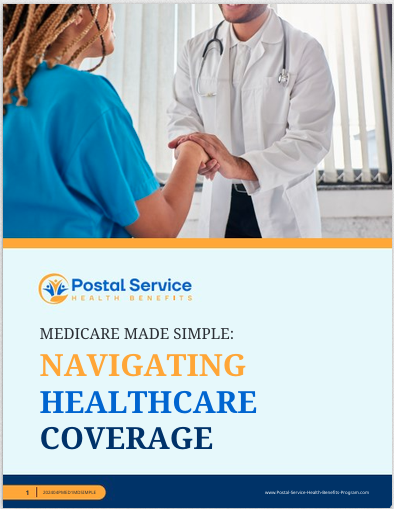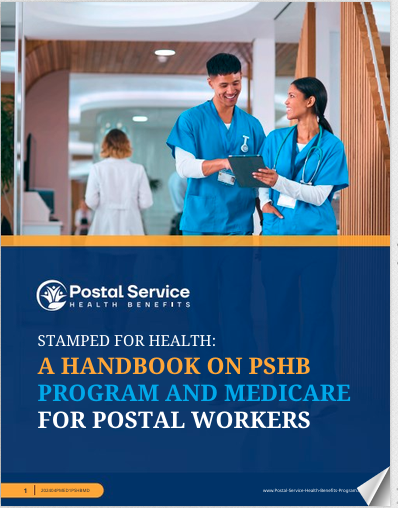Key Takeaways
- Explore Your Options: The 2025 Open Season for the Postal Service Health Benefits (PSHB) program is an important opportunity to review your health coverage options and make any necessary adjustments.
- Know Your Deadlines: Open Season runs from November 11 to December 9, 2024, giving you a set period to make changes that will be effective starting January 1, 2025.
PSHB 2025: How to Make the Best Health Plan Choice This Open Season
Selecting the right health plan under the new Postal Service Health Benefits (PSHB) program is key to meeting your healthcare needs as a postal worker or retiree in 2025. With the transition from the Federal Employees Health Benefits (FEHB) system, it’s crucial to understand how the PSHB program works and to ensure your selected plan aligns with your health priorities, financial situation, and lifestyle. Here’s what you need to know to make an informed decision before Open Season ends.
Understand the Open Season Timeline
The Open Season for PSHB runs from November 11 to December 9, 2024. During this window, you can review, change, or enroll in health plans, with changes taking effect on January 1, 2025. Missing this period means you’ll have to wait until the following year’s Open Season unless you qualify for a Special Enrollment Period (SEP). This timeline is consistent annually, so you can plan ahead for future enrollments as well.
Why the Shift from FEHB to PSHB?
PSHB was created to provide a dedicated health benefits program tailored specifically for postal workers and retirees. The transition to PSHB means that you’ll no longer have access to the FEHB program but instead will choose from plans specifically designed with postal employees in mind. This shift allows for more focused benefits and coverage options that align with the unique needs of postal employees and their families.
Automatic Enrollment
For current FEHB enrollees, the switch to PSHB is automatic. This means that if you are enrolled in an FEHB plan, you’ll be automatically enrolled in a corresponding PSHB plan. You should receive a notification with details about your automatic enrollment option, which provides a good foundation for reviewing and comparing other plans before Open Season.
Consider Your Health Needs for 2025
Evaluating your healthcare needs will help you choose a plan that meets your needs without unnecessary costs. Here are a few questions to consider:
- Do you anticipate needing regular check-ups or specialist care?
- Will you need prescriptions or specific medications?
- Do you expect any major medical procedures or hospital stays?
Your answers will guide you in selecting the right type of coverage, whether it’s a low-cost premium with higher deductibles or a more comprehensive plan with minimal out-of-pocket expenses.
Exploring PSHB Plan Options
PSHB offers a range of health plan options, including High Deductible Health Plans (HDHPs), Preferred Provider Organizations (PPOs), and other traditional plans. Each type has distinct benefits, so understanding them will help narrow your choices.
1. High Deductible Health Plans (HDHPs)
HDHPs come with lower monthly premiums but higher out-of-pocket costs until you meet your deductible. These plans are often a good fit for individuals who expect low annual healthcare costs but want protection in case of emergencies. HDHPs also pair well with Health Savings Accounts (HSAs), which allow you to save pre-tax money for healthcare expenses.
2. Preferred Provider Organizations (PPOs)
PPOs offer greater flexibility in choosing healthcare providers and don’t require referrals to see specialists. While these plans might come with higher premiums, they tend to be popular among those who want a broad network of doctors and facilities or anticipate needing specialized care.
3. Traditional Health Plans
Traditional plans offer a balance of monthly premiums and out-of-pocket expenses. These plans often provide access to a more comprehensive set of benefits without high deductibles, making them a good choice for individuals or families with ongoing healthcare needs.
Medicare and PSHB Integration
If you’re a Medicare-eligible retiree or you have family members who qualify for Medicare, understanding PSHB’s integration with Medicare is essential. In some cases, enrolling in Medicare Part B will be required to maintain PSHB coverage.
Medicare Requirements and Exceptions
For PSHB participants who retire on or after January 1, 2025, and who are eligible for Medicare, enrolling in Medicare Part B is necessary to continue receiving PSHB coverage. However, if you retired before this date and are not enrolled in Part B, you can still maintain your PSHB coverage without needing to sign up for Part B.
Coordinating PSHB and Medicare
Combining Medicare and PSHB coverage can help lower overall healthcare costs. Medicare often covers a significant portion of hospital and medical costs, while PSHB plans offer additional benefits. By coordinating coverage, you can reduce or even eliminate out-of-pocket costs for many medical services, especially if you need routine or specialized care.
Compare Costs Carefully
Balancing premiums, deductibles, and out-of-pocket maximums can make a big difference in what you’ll spend throughout the year. When comparing plans, look closely at:
- Monthly Premiums: The fixed cost you’ll pay each month for coverage.
- Deductibles: The amount you pay before insurance starts to cover services.
- Out-of-Pocket Maximums: The cap on what you’ll spend in a year on covered healthcare costs.
Taking time to assess these costs relative to your budget will ensure you choose a plan that keeps your healthcare expenses manageable.
Weigh Prescription Drug Coverage
If you or a family member rely on regular prescriptions, be sure to compare the drug coverage options within each PSHB plan. Plans often vary in their coverage of medications, so take note of:
- Formulary: The list of covered drugs under a plan.
- Tier Structure: Many plans categorize drugs by tiers, which can impact out-of-pocket costs.
Check whether your prescriptions are covered and at what cost, as these factors can substantially affect your total annual healthcare spending.
Consider Special Enrollment Periods (SEP)
Special Enrollment Periods (SEP) allow you to make plan changes outside of Open Season if you experience qualifying life events. Common SEPs are triggered by events such as:
- Moving outside of your plan’s coverage area
- Changes in family status (marriage, divorce, birth, or adoption)
- Loss of other health insurance coverage
Knowing when and how to qualify for SEPs can help ensure continuous coverage even if your life circumstances change.
Seek Advice and Use Available Resources
Choosing a health plan is a big decision, so make the most of the resources available to you:
- Plan Comparison Tools: These can provide a side-by-side view of benefits, costs, and coverage options.
- Human Resources: Your HR department can answer specific questions about PSHB or the transition from FEHB.
- Educational Materials: The U.S. Office of Personnel Management (OPM) offers helpful guides and FAQs for postal workers transitioning to PSHB.
Taking the time to read through these resources can clarify options and simplify the decision-making process.
Next Steps Before Open Season Ends
As Open Season for the PSHB program comes around, it’s time to review, compare, and make informed decisions. Here’s a quick checklist to get you started:
- Review your current plan and benefits to see what will change with the transition to PSHB.
- Use plan comparison tools to assess costs and coverage options across different PSHB plans.
- Check Medicare eligibility if you’re a retiree, and determine if signing up for Medicare Part B is beneficial.
- Mark your calendar for the December 9 deadline to avoid missing your chance to enroll or make changes.
Take the time to review all the options and make choices that align with your needs and goals for 2025.
Health Plan Peace of Mind for Postal Workers in 2025
Choosing the right PSHB plan ensures that you and your family have access to the healthcare services you need throughout the year. By taking advantage of Open Season to review options and carefully weighing your healthcare priorities, you can make an informed decision that provides security and peace of mind well into the new year.







